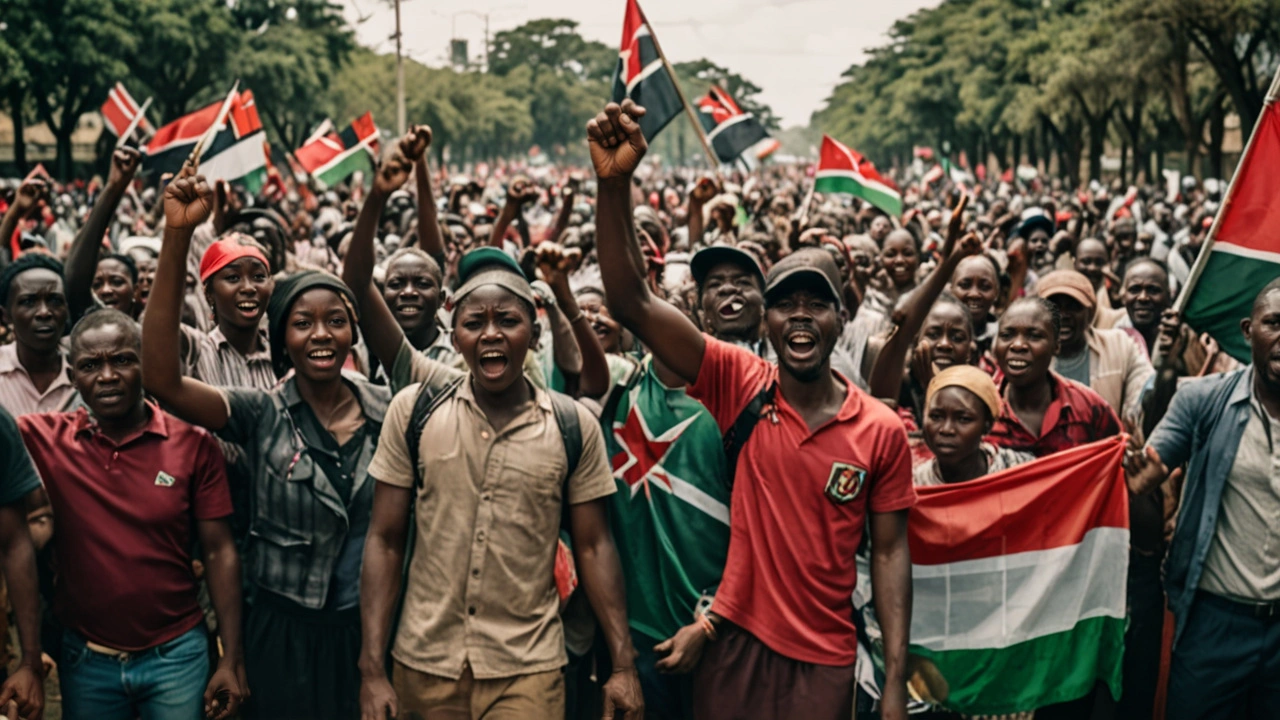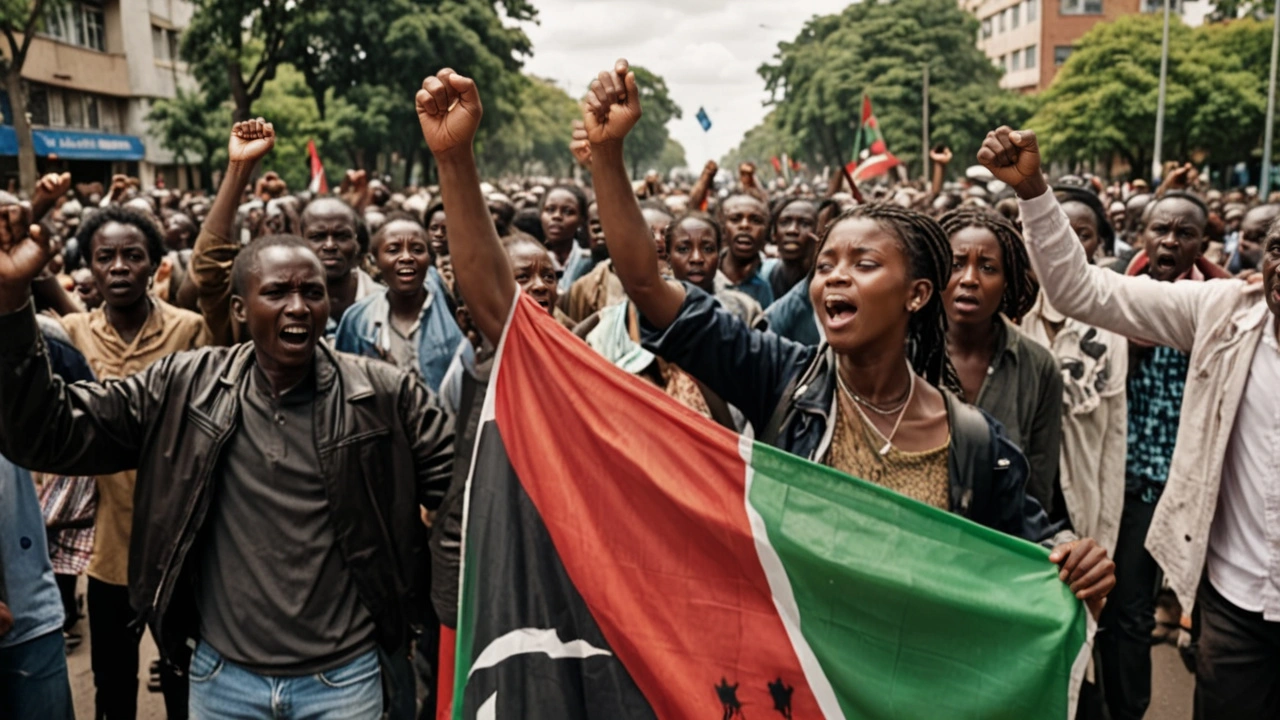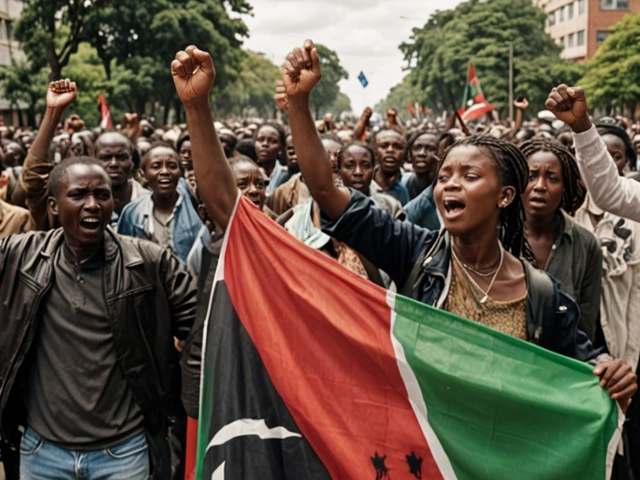Kenya Police Chief Resigns Amidst Protest Crackdown Backlash
In a dramatic development that has grabbed the nation’s attention, Kenya's Inspector-General of Police, Japhet Koome, has resigned following a wave of criticism over the force's handling of recent antigovernment protests. The protests, stemming from public outrage over proposed tax increases, have left a trail of devastation and dissatisfaction among the citizens.
Japhet Koome’s resignation was officially accepted by President William Ruto, marking a significant turning point in the government’s approach to the crisis. The police force, under Koome’s leadership, faced severe backlash over allegations of using excessive force, including deploying live bullets, against demonstrators. One of the central criticisms leveled against Koome was his perceived brutality in dealing with protesters, which according to the national rights watchdog, resulted in at least *39 deaths*. This death toll has only intensified the public's resolve, with many viewing Koome’s resignation as a direct victory for their demands.
The Crisis Breakdown
The origin of these protests can be traced back to the government’s announcement of a contentious finance bill that proposed significant tax increases. The proposed policy was met with fierce resistance, particularly from young Kenyans who felt disproportionately burdened by the new taxes. The government’s response to the unrest, involving stringent crackdowns on demonstrators, quickly garnered widespread criticism both domestically and internationally.
Adding fuel to the fire, several reports and testimonies emerged showcasing the brutal measures employed by the police. From eye-witness accounts to documented injuries, the public outcry grew louder with every passing day. Social media was flooded with graphic images and videos, prompting a global conversation about police misconduct in Kenya. The situation had clearly spiraled out of control, and for many, Koome had become the symbol of state repression.

Government’s Response
In light of the growing dissatisfaction, President William Ruto’s acceptance of Koome’s resignation is being viewed as a significant, albeit belated, gesture towards addressing public grievances. To further show his commitment to resolving the crisis, Ruto has appointed Deputy Inspector-General Douglas Kanja as the acting police chief, hoping to restore a modicum of public trust in the police force.
Beyond policing, Ruto has also made sweeping changes to his cabinet in a bid to placate the protesters. Almost the entire cabinet has been dismissed, a clear indication of the administration's willingness to take drastic measures to quell the unrest. Moreover, in a move that surprised many, Ruto shelved the controversial finance bill that initially sparked the protests, hoping that this concession would pacify the demonstrators.
Yet, despite these noteworthy measures, a significant portion of the protesters remain unsatisfied. For them, Koome’s resignation and the scrapping of the tax bill are merely the first steps in a longer journey towards attaining justice and accountability. The core of their demands, as articulated in numerous statements and speeches, is a call for President Ruto himself to step down.
The Voices of Protest
The ongoing unrest in Kenya is symptomatic of deeper, more entrenched issues within the country. Many young Kenyans are grappling with high unemployment rates, endemic corruption, and a sense of disenfranchisement from the political process. The proposed tax hikes were merely the catalyst that brought these simmering frustrations to the surface.
Several demonstrators have taken to the streets repeatedly, driven by a mix of anger and hope. For them, the battle is as much about reclaiming their future as it is about addressing immediate grievances. Activists, social groups, and community leaders have all been at the forefront of this movement, presenting a united front against what they perceive as an oppressive regime.
Notably, the role of women and youth in these protests has been pivotal. From leading marches to organizing community support groups, their involvement has injected the movement with a renewed sense of purpose and urgency. In many ways, these protests are redefining the sociopolitical landscape of Kenya, showcasing the power of collective action.

International Reactions
The situation in Kenya has not gone unnoticed on the global stage. Various international bodies, human rights organizations, and foreign governments have expressed their concerns over the excessive use of force by the police. Calls for investigations into the conduct of the police during the protests have been gaining momentum, with many advocating for greater accountability and reforms within the Kenyan police force.
In response to these international pressures, the Kenyan government has promised to investigate the incidents thoroughly and ensure that those responsible for any misconduct are brought to justice. However, skeptics remain wary, pointing to a historical lack of accountability and transparency within the system.
What's Next for Kenya?
As Kenya navigates through this turbulent period, the next steps will be crucial in determining the nation’s trajectory. The resignation of Japhet Koome, the dismissal of the cabinet, and the shelving of the finance bill are significant developments, but they may only be the tip of the iceberg in addressing the broader issues facing the country.
For many Kenyans, the hope is that these events will pave the way for meaningful reforms and a more inclusive political process. The demands of the protesters extend beyond Koome’s resignation, calling for a systemic overhaul that addresses long-standing inequalities and injustices. It remains to be seen how the government will navigate these demands while maintaining stability and order.
One thing is clear: the voices of the Kenyan people have resonated loudly, and their call for change cannot be easily dismissed. Whether through continued protests or dialogue, the pressure is on the government to deliver real, lasting solutions. The world watches keenly as Kenya charts its path forward, hopeful that this moment of crisis will lead to a more just and equitable future for all its citizens.

Conclusion
In conclusion, the resignation of Kenya's Police Chief Japhet Koome marks a pivotal moment in the ongoing saga of the country's protest movement. With significant actions taken by President Ruto to address the crisis, including the reshuffling of his cabinet and the reversal of unpopular policies, the government has shown a willingness to listen to its people. However, the road ahead remains complex and fraught with challenges. As the citizens of Kenya continue to voice their demands for justice and reform, the nation's leadership faces a crucial test in navigating this period of turmoil and emerging stronger on the other side.






Post A Comment